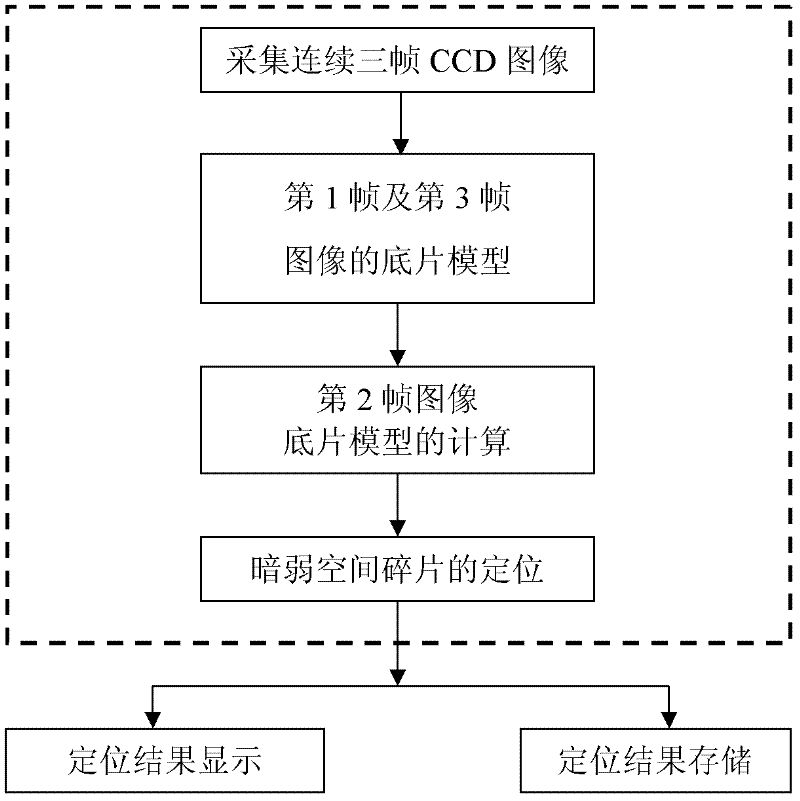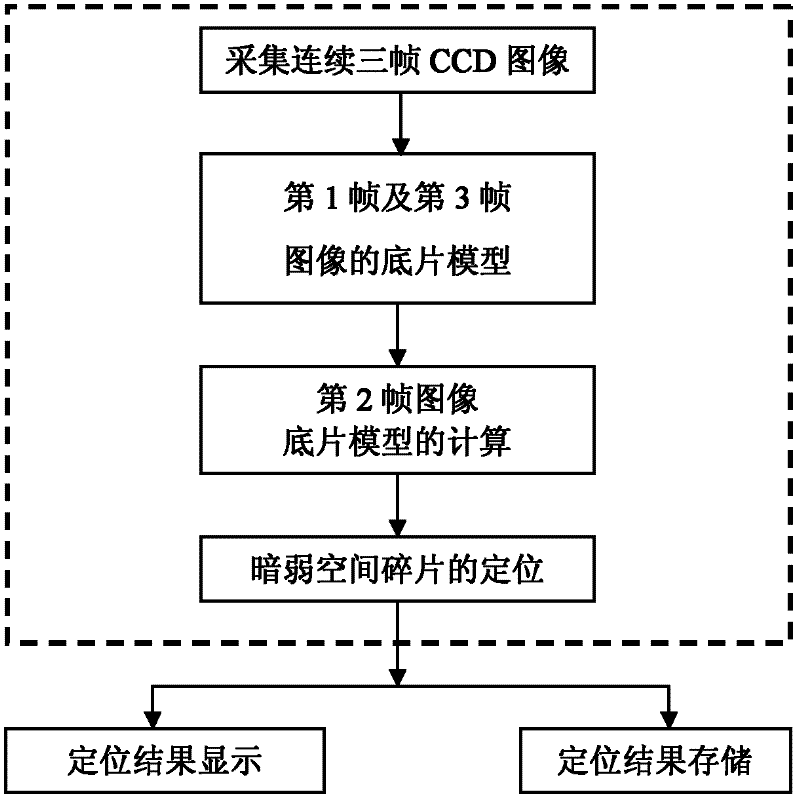High precision positioning method of dark space debris
A technology of space debris and positioning method, which is applied in the directions of measuring devices, instruments, surveying and mapping, and navigation, etc. It can solve the problems of increasing the aspect ratio of star images, reducing the positioning accuracy of star images, reducing the signal-to-noise ratio of background star images, etc., and achieving the goal of processing good effect
- Summary
- Abstract
- Description
- Claims
- Application Information
AI Technical Summary
Problems solved by technology
Method used
Image
Examples
Embodiment 1
[0025] Embodiment 1, with reference to figure 1 : Follow the steps below:
[0026] ⑴. Acquire three consecutive frames of CCD images
[0027] When tracking faint space debris, the observation software continuously collects 3 frames of images, of which the exposure time of the 1st and 3rd frames is short, and the exposure time of the 2nd frame is long. The collected 3 frames of CCD images contain corresponding time and pointing information, which are stored in the designated buffer of computer memory.
[0028] ⑵. Negative models of the 1st and 3rd frame images
[0029] ⑶. According to the 3 frames of images collected in the first step (1), through the matching results of the theoretical star map and the measured star map, calculate the negative model of the first frame and the third frame of images for use in the positioning of faint space debris.
[0030] ⑷. localization of faint space debris;
[0031] According to the calculation result of the negative film model of t...
PUM
 Login to View More
Login to View More Abstract
Description
Claims
Application Information
 Login to View More
Login to View More - R&D
- Intellectual Property
- Life Sciences
- Materials
- Tech Scout
- Unparalleled Data Quality
- Higher Quality Content
- 60% Fewer Hallucinations
Browse by: Latest US Patents, China's latest patents, Technical Efficacy Thesaurus, Application Domain, Technology Topic, Popular Technical Reports.
© 2025 PatSnap. All rights reserved.Legal|Privacy policy|Modern Slavery Act Transparency Statement|Sitemap|About US| Contact US: help@patsnap.com


